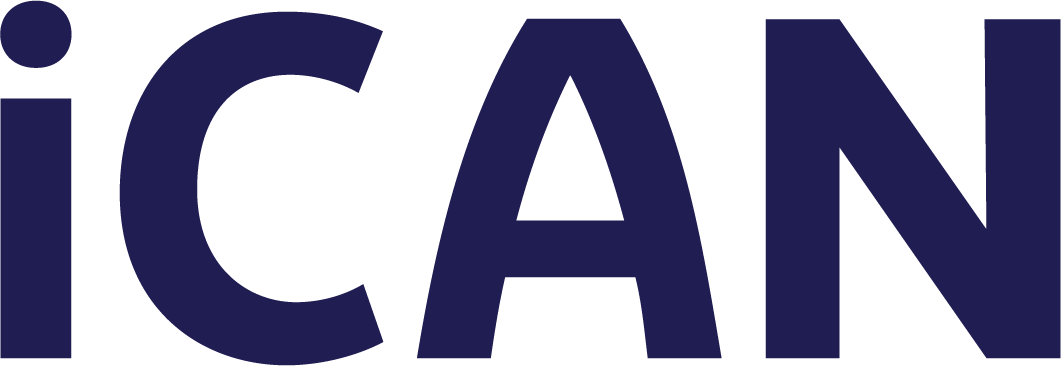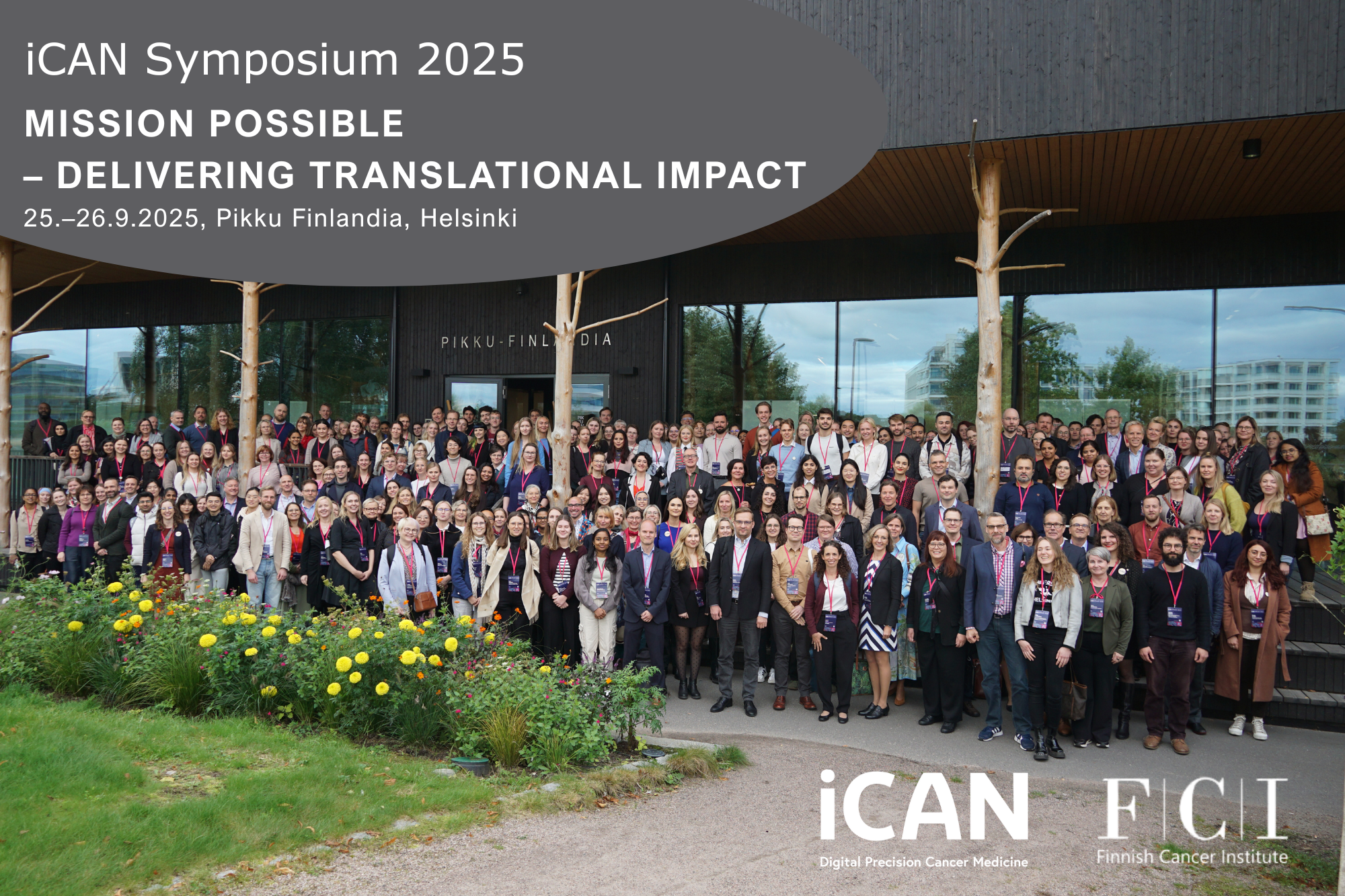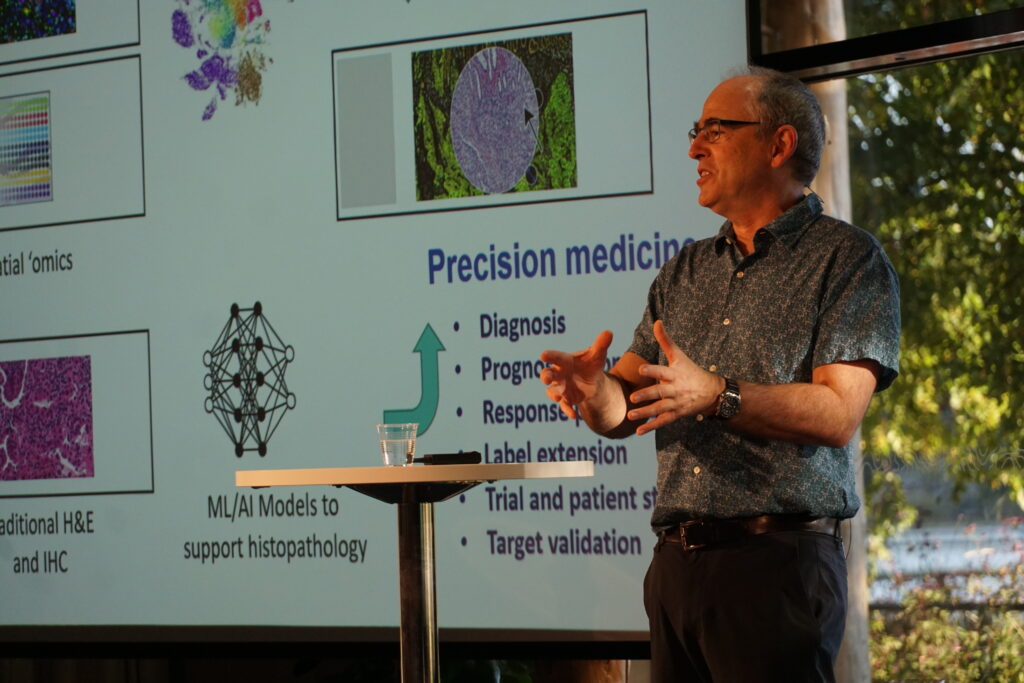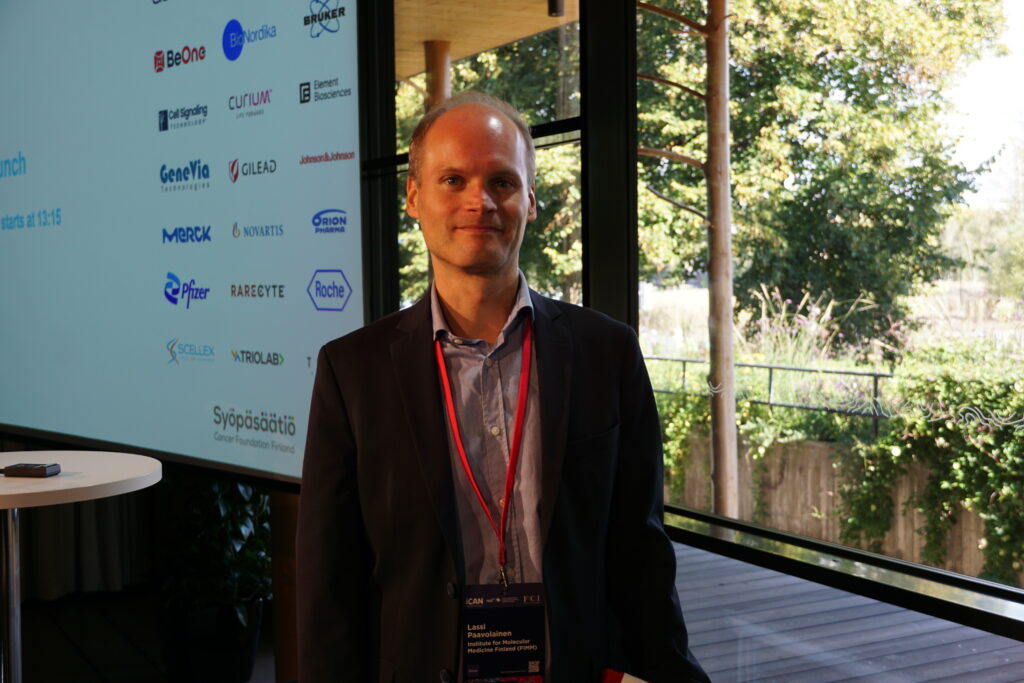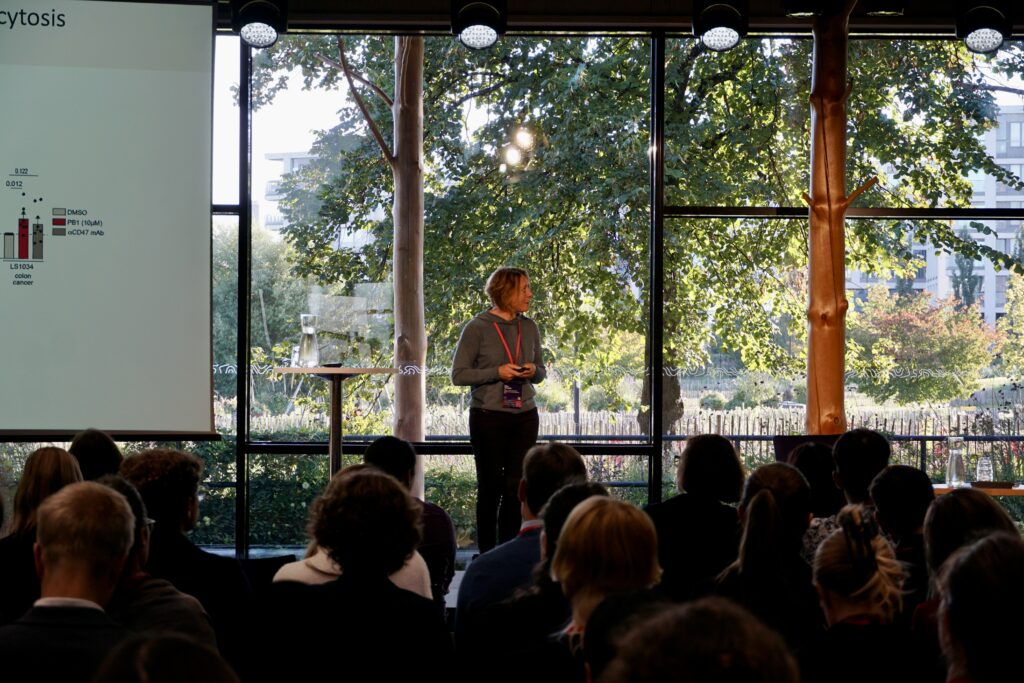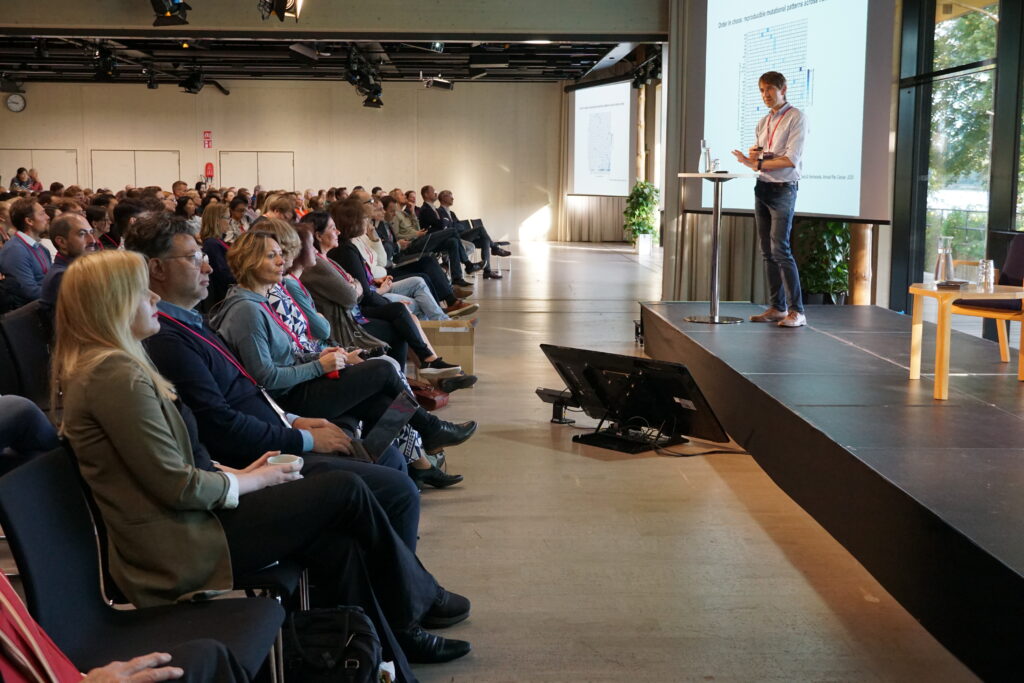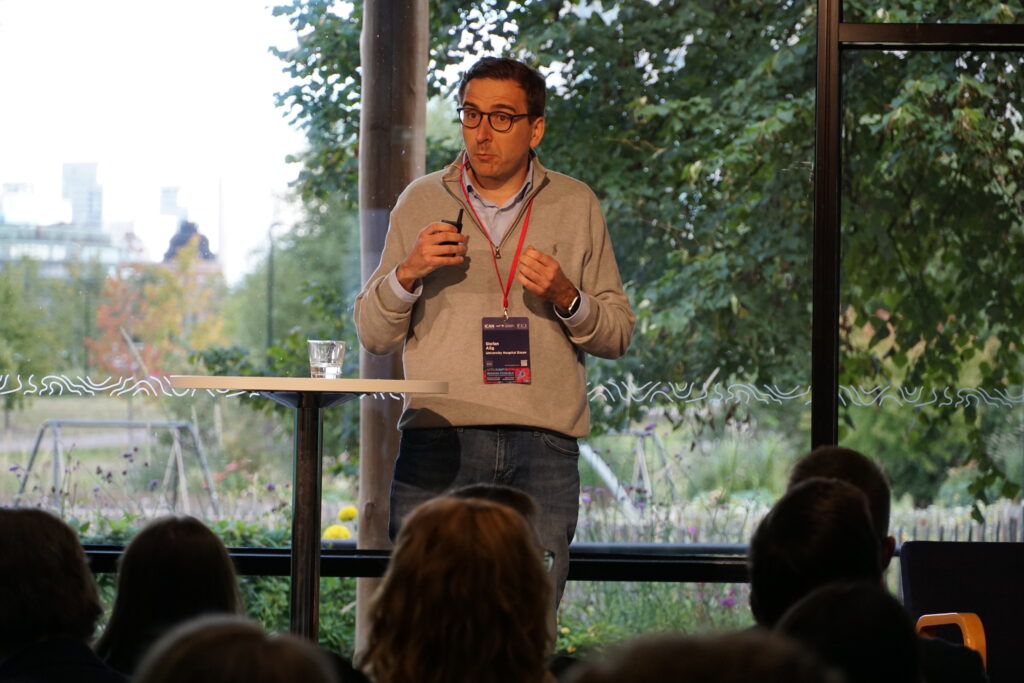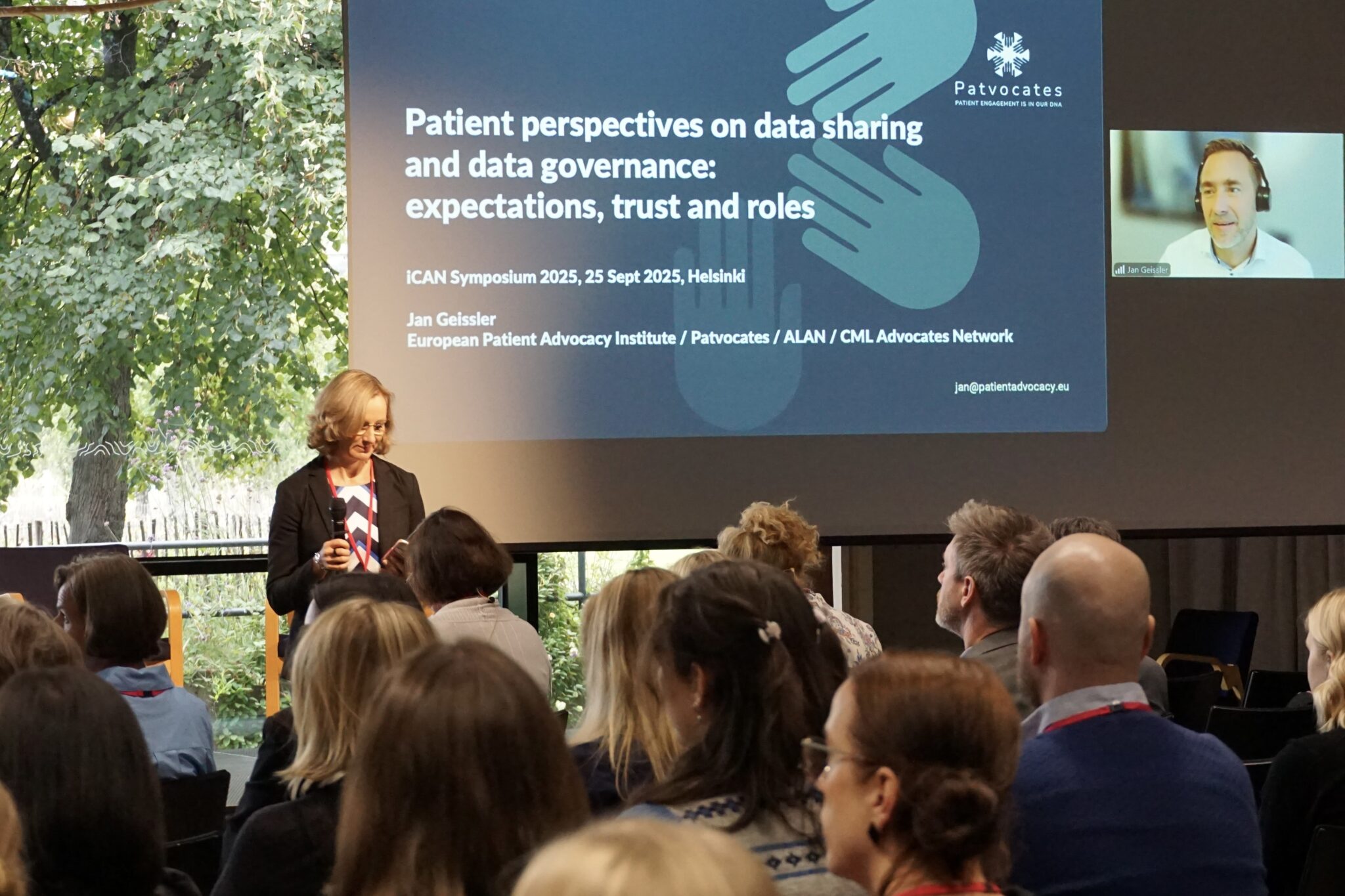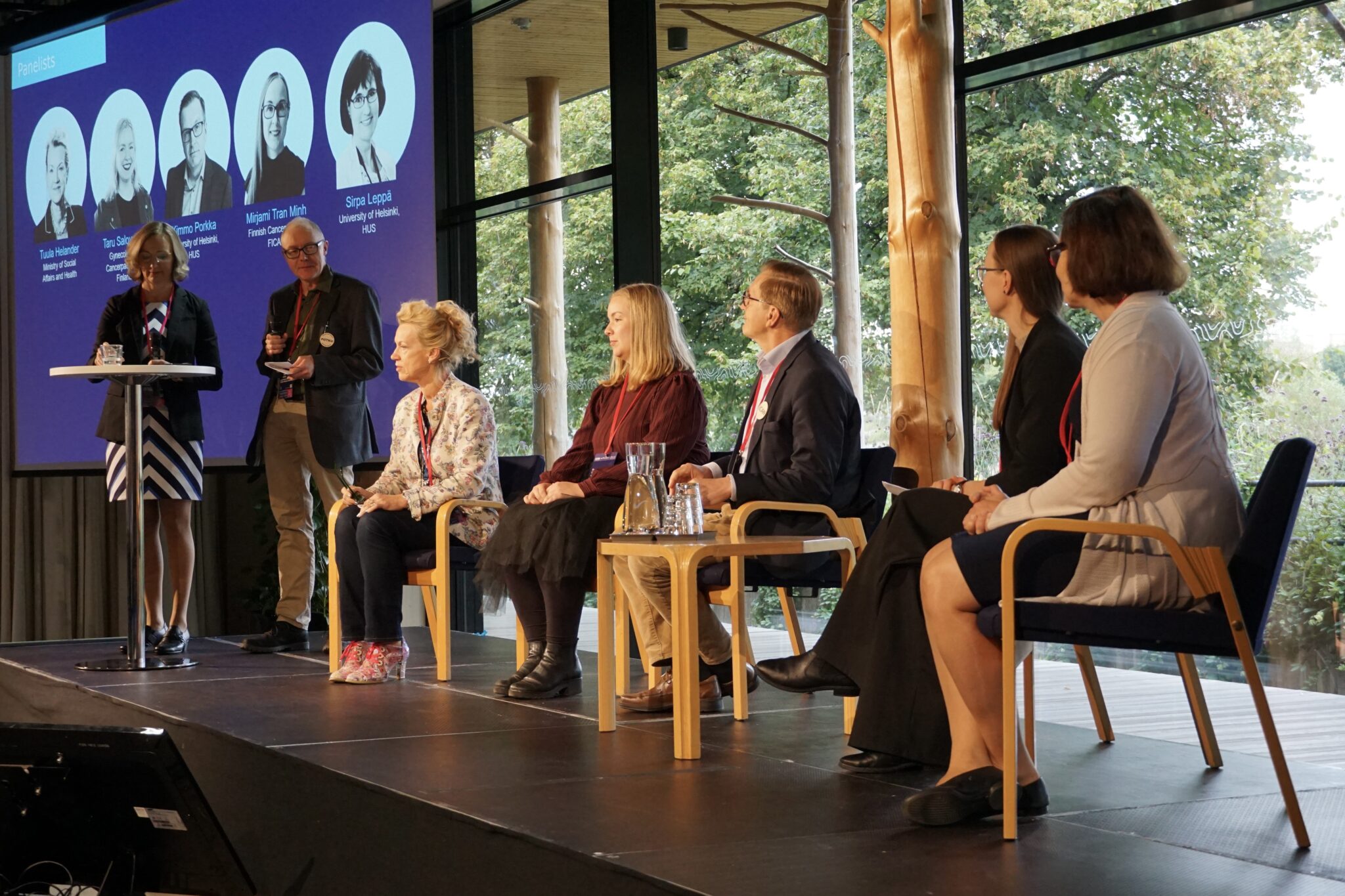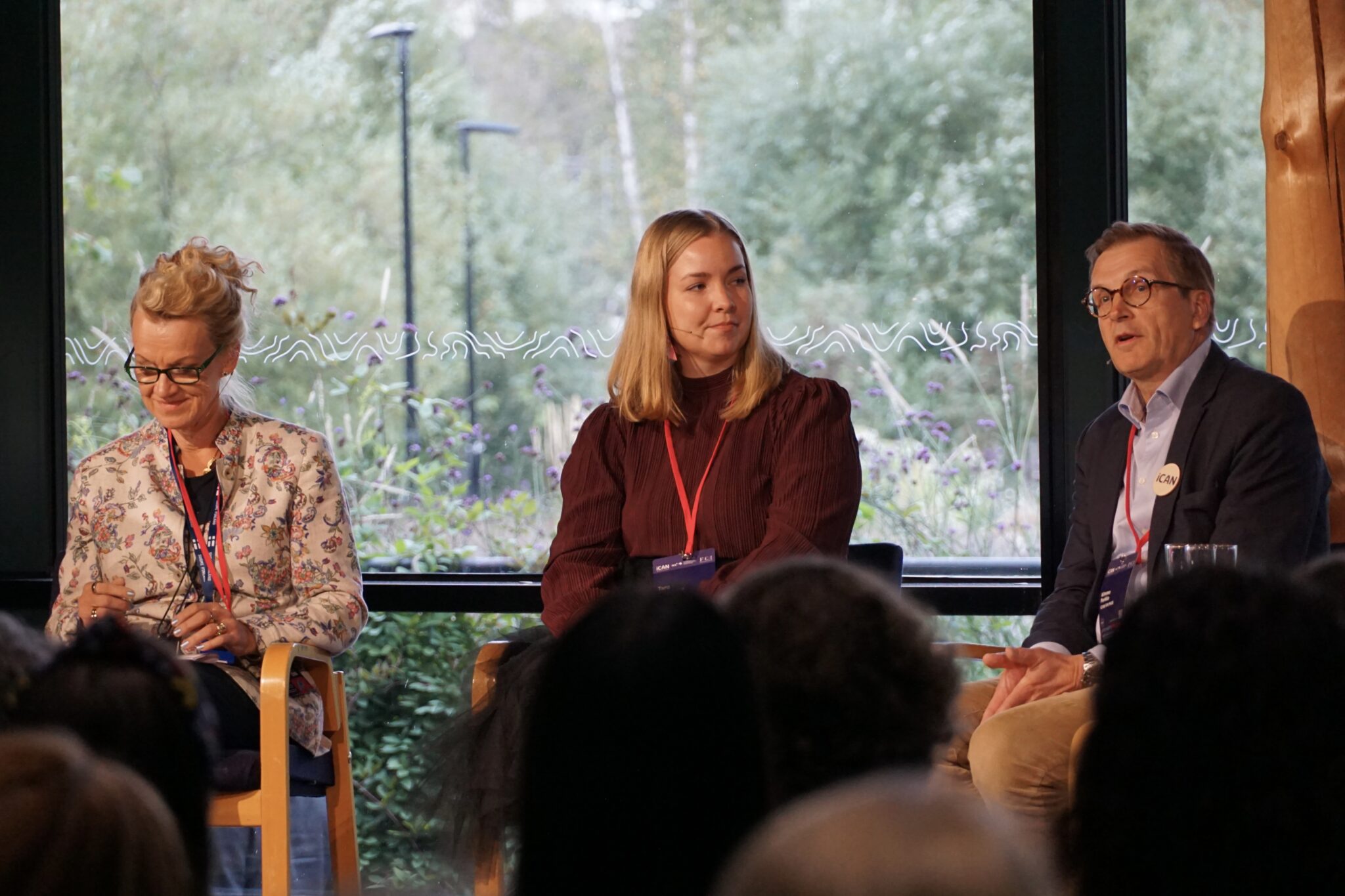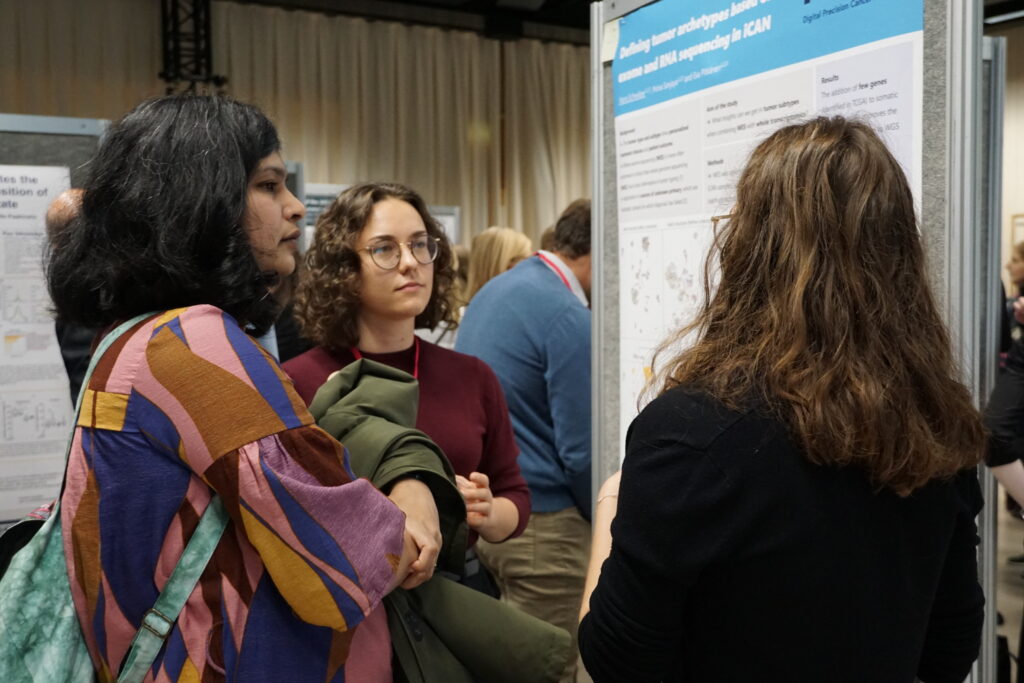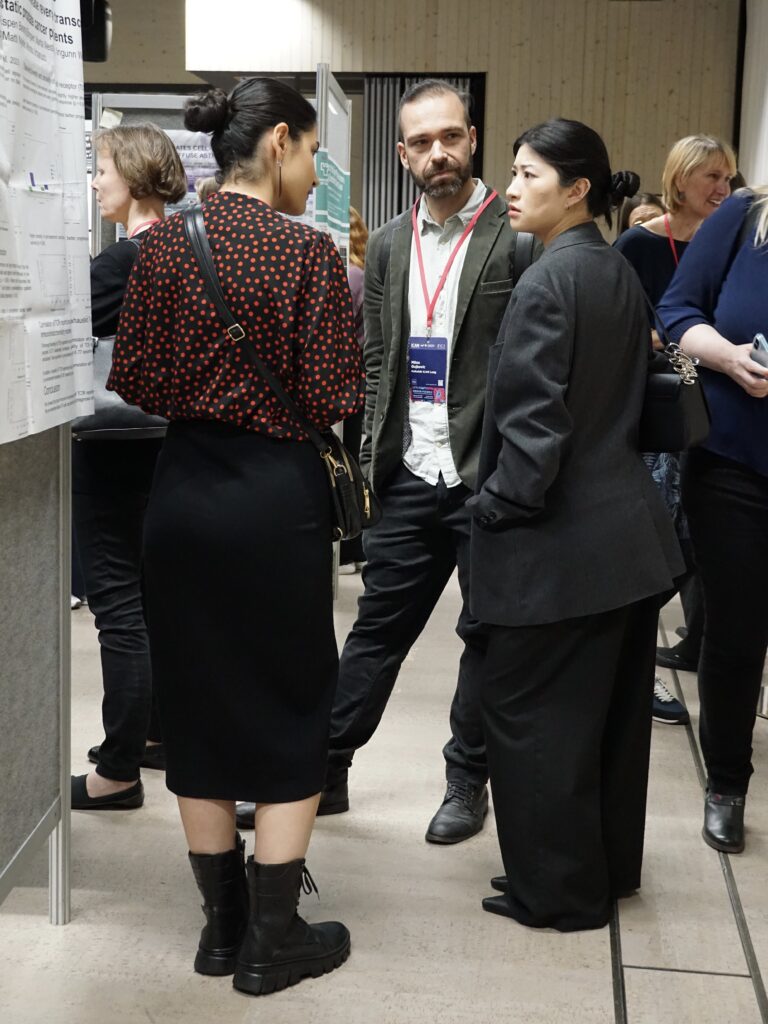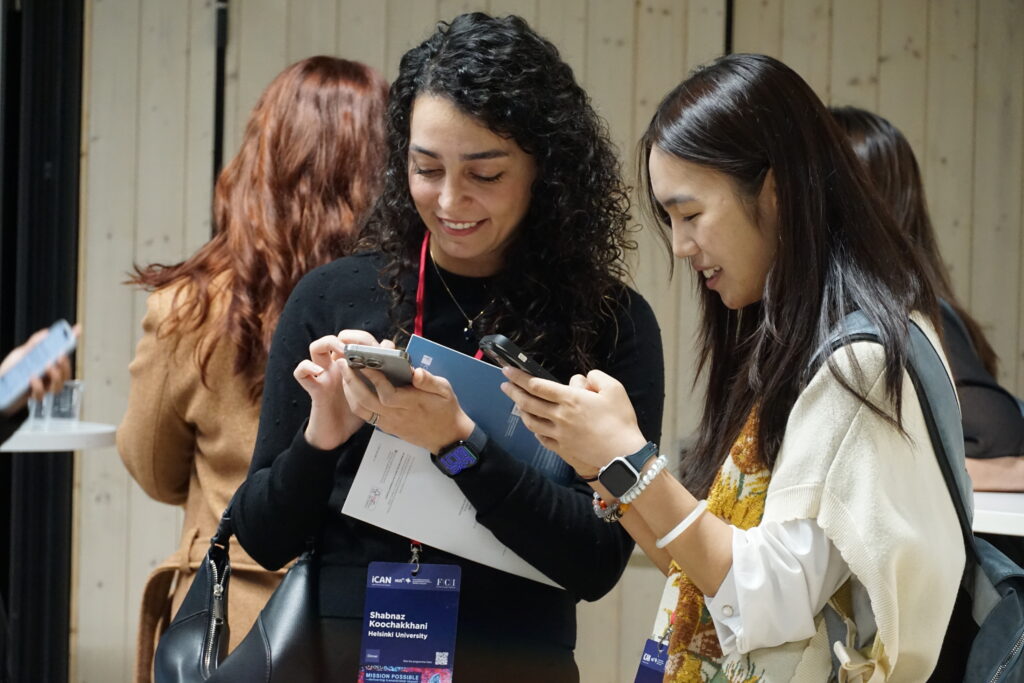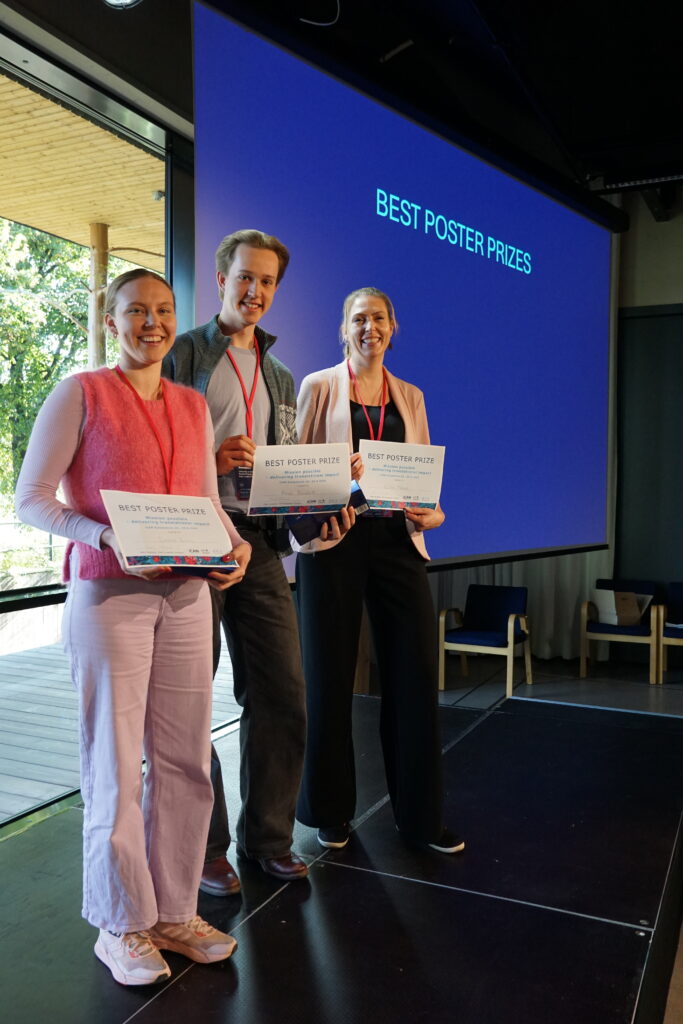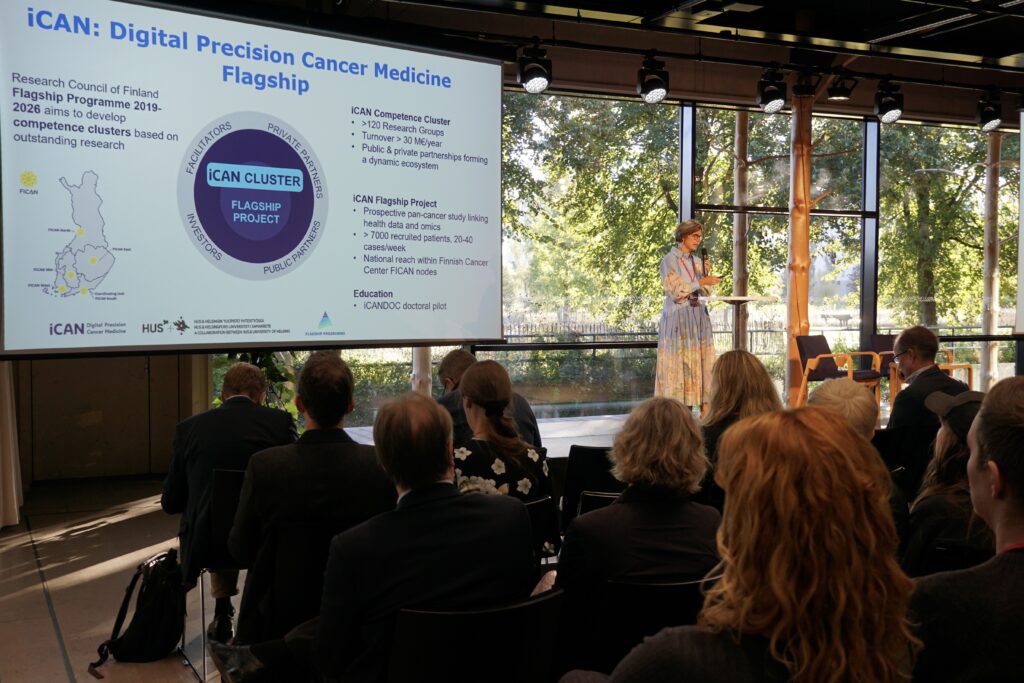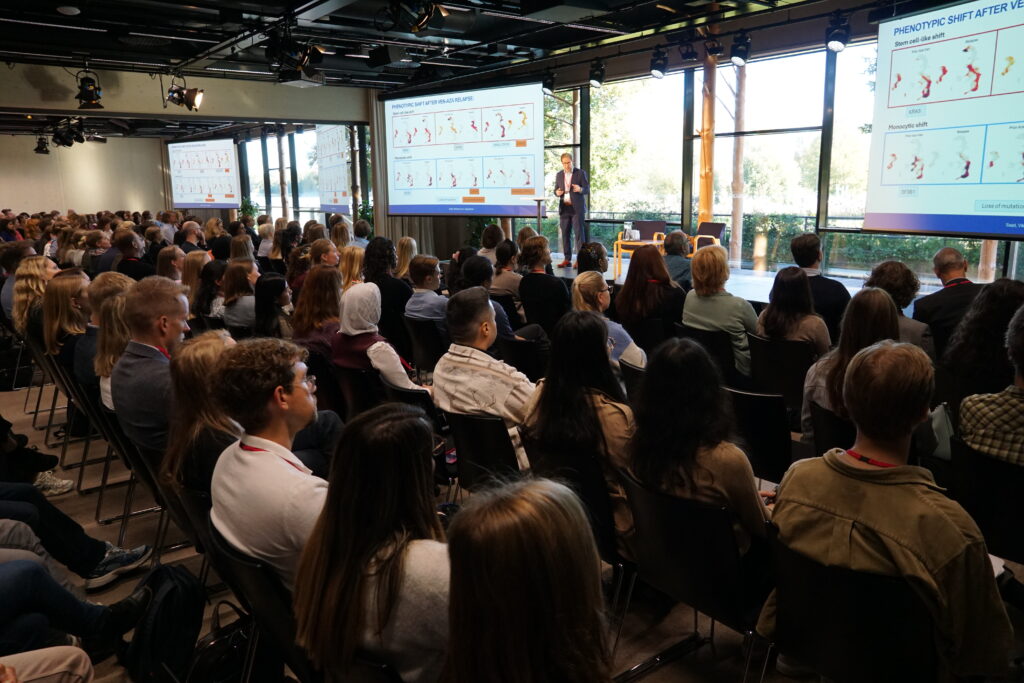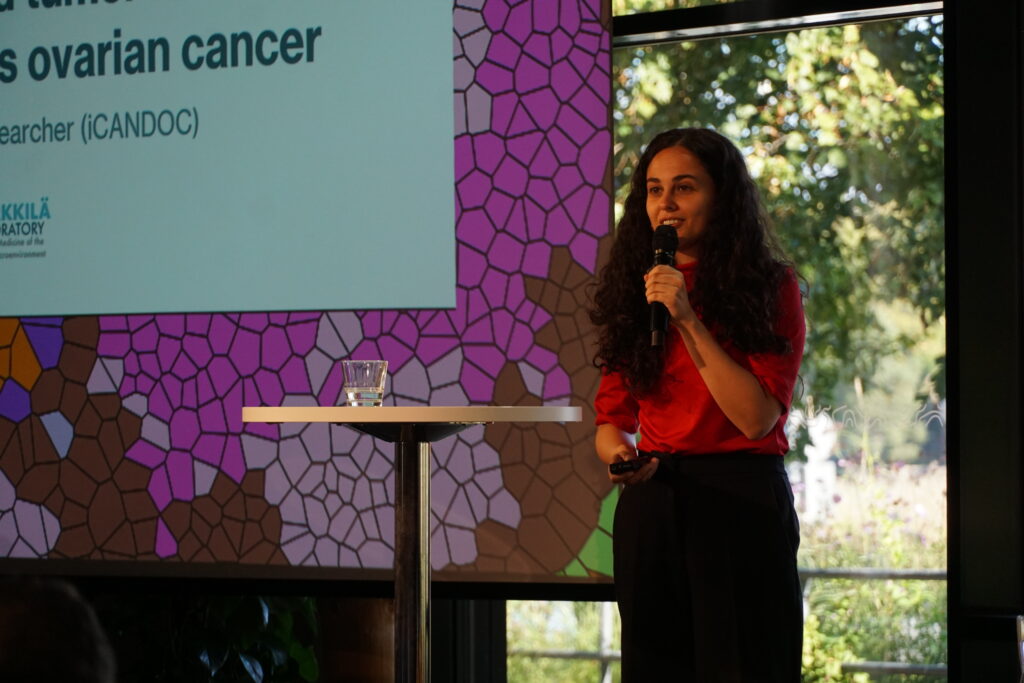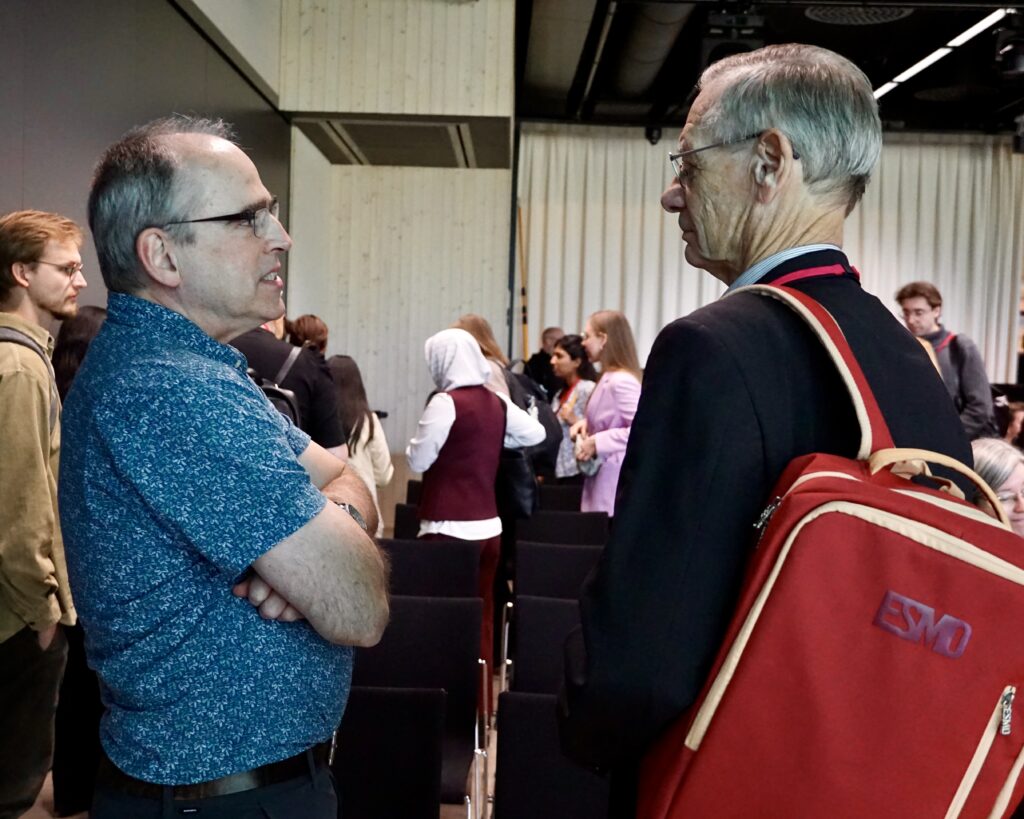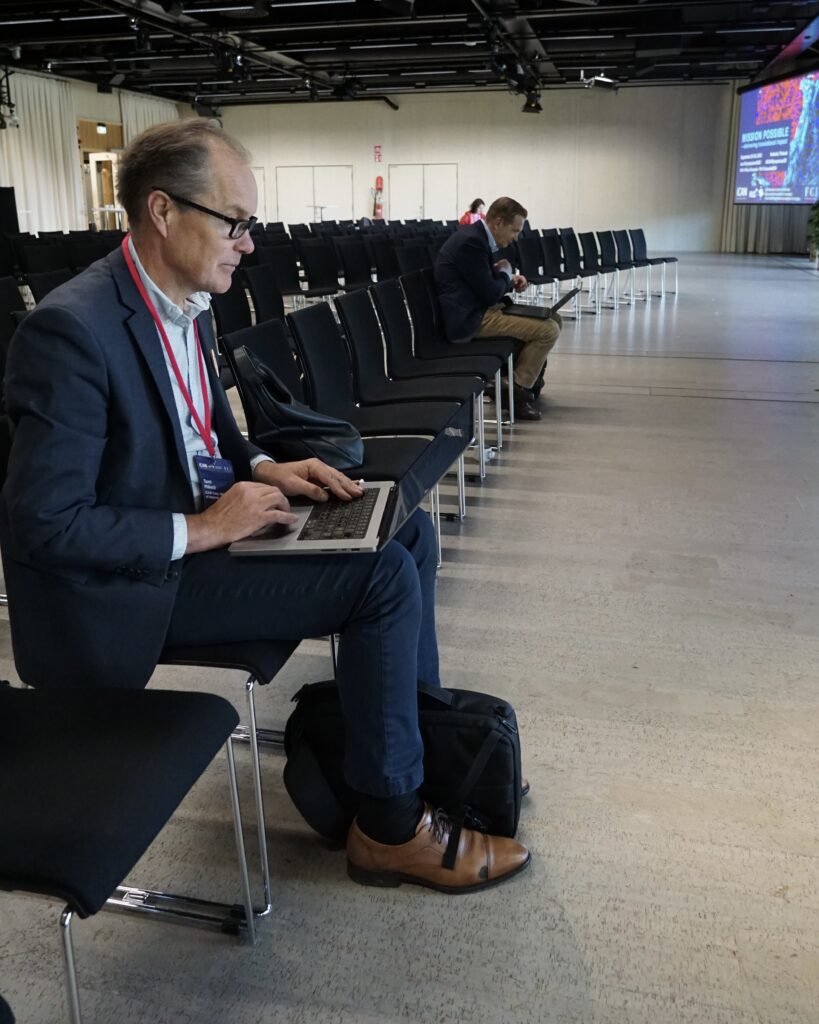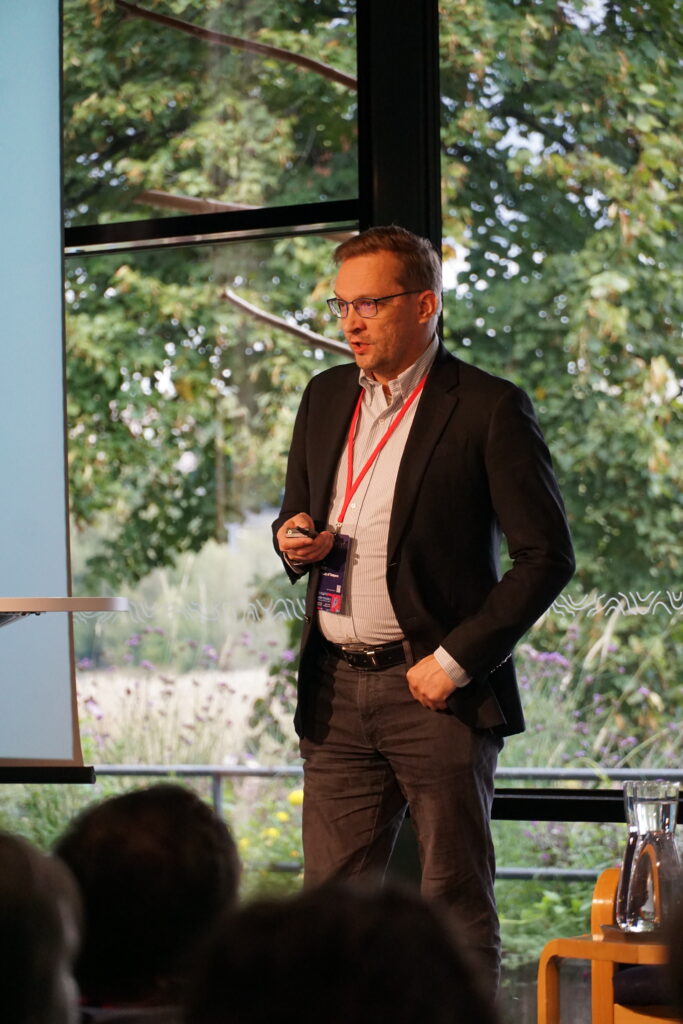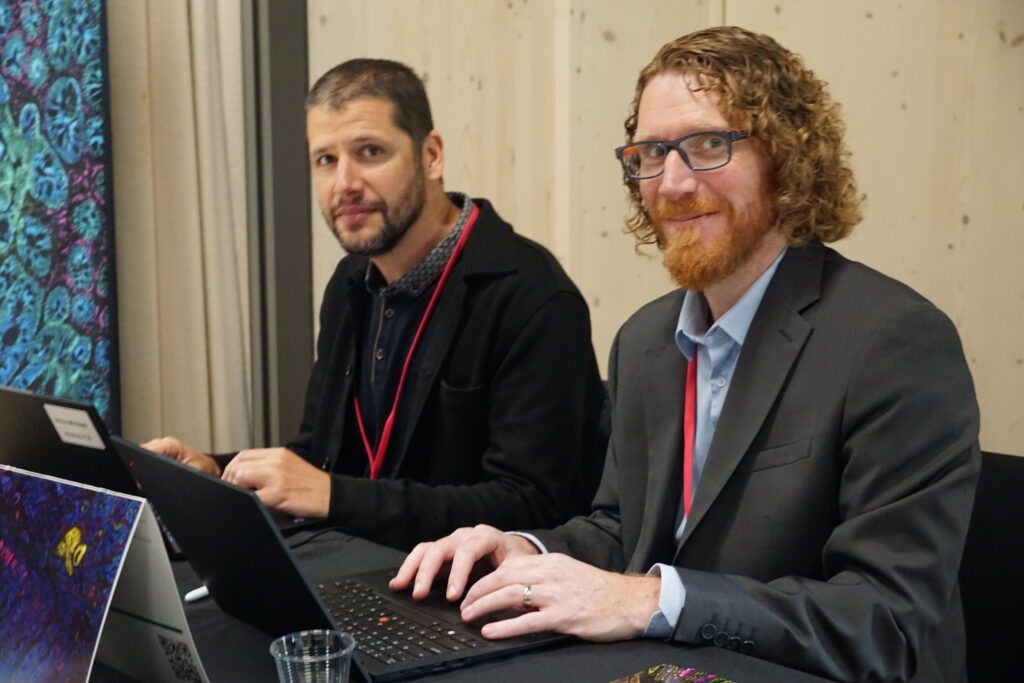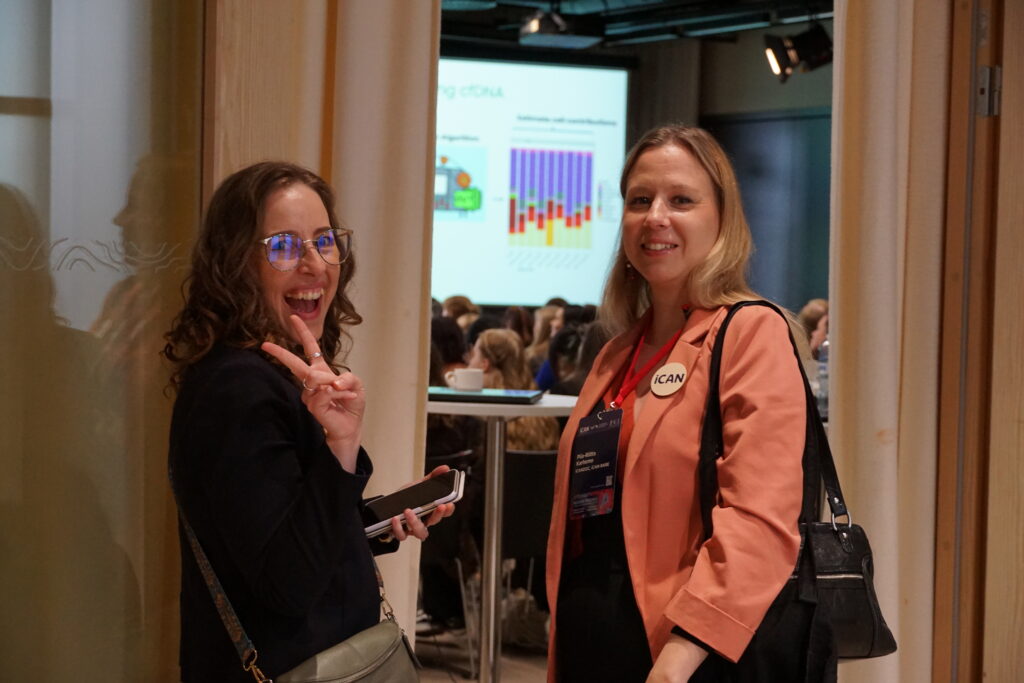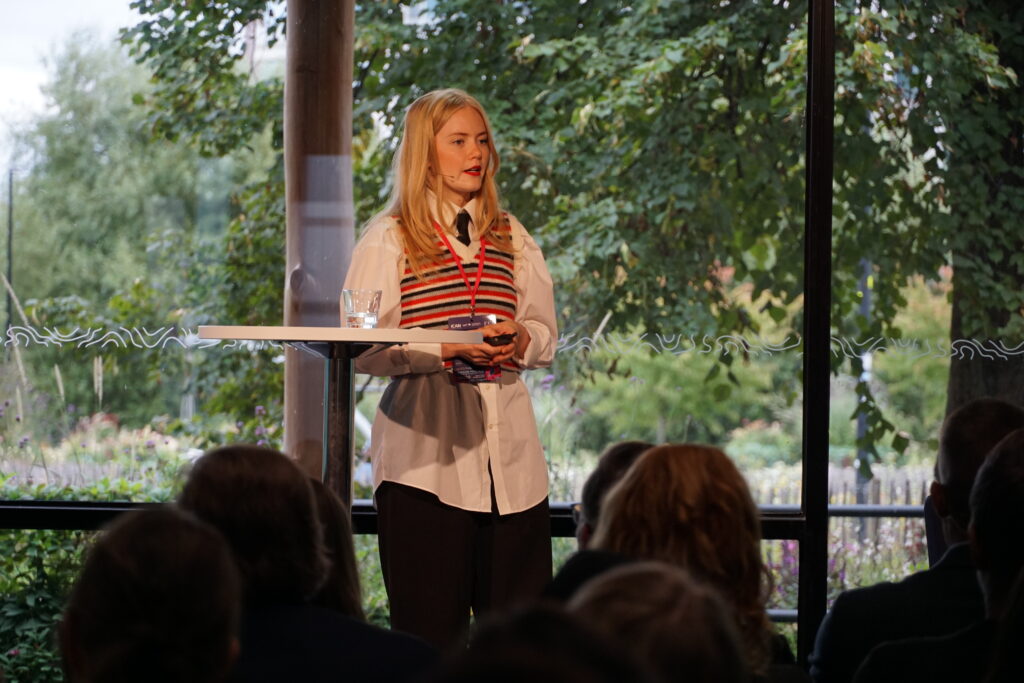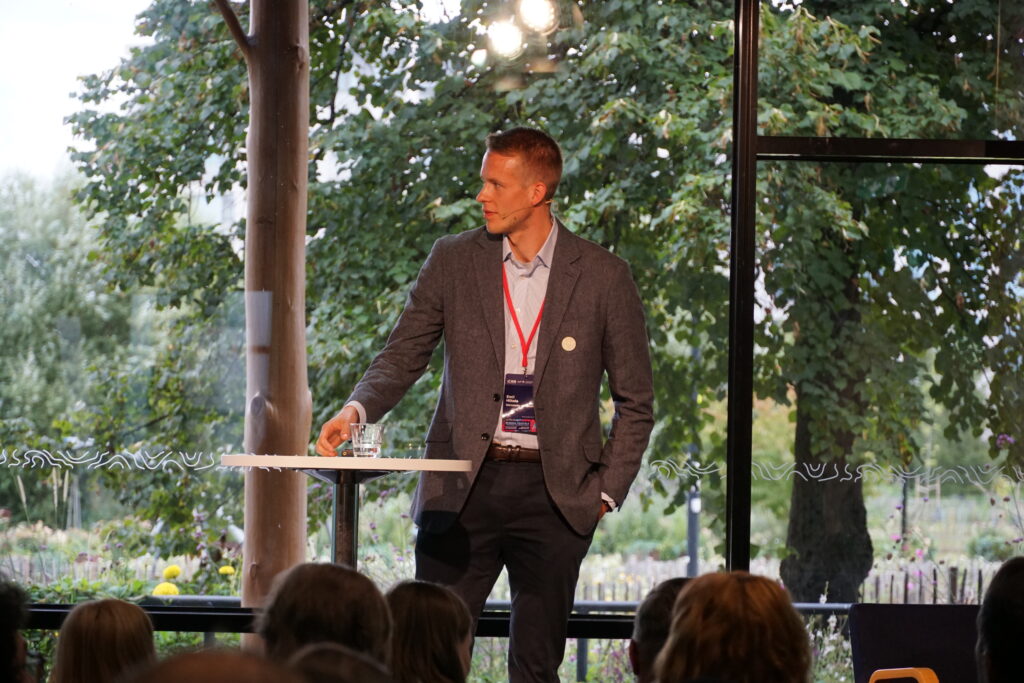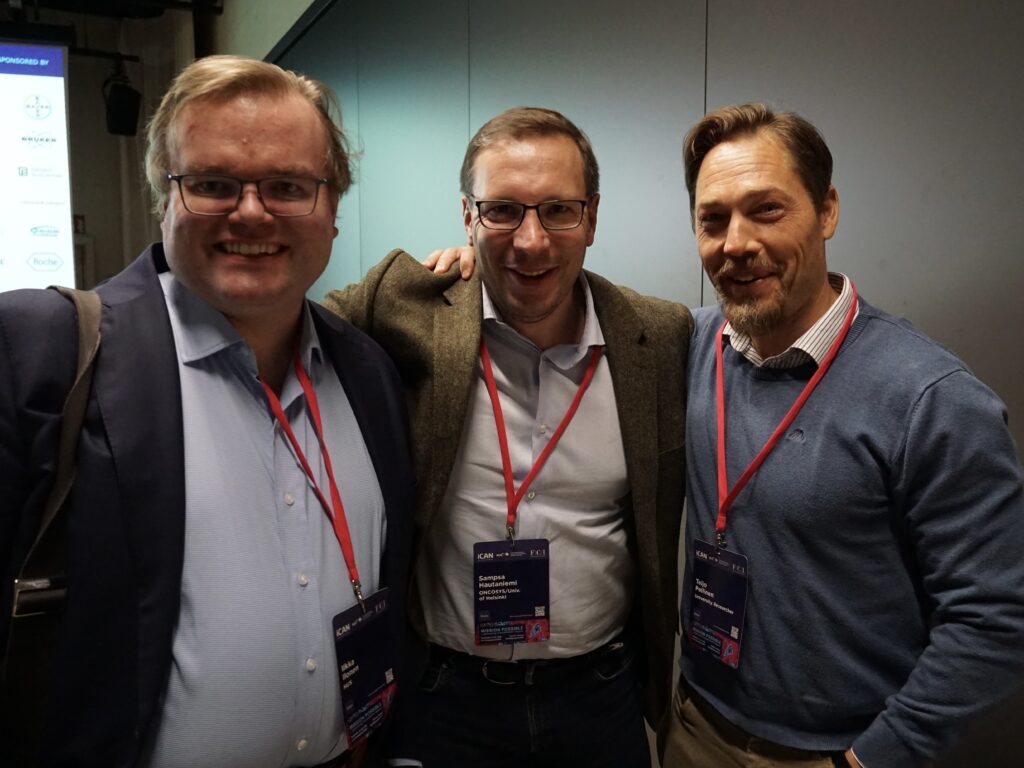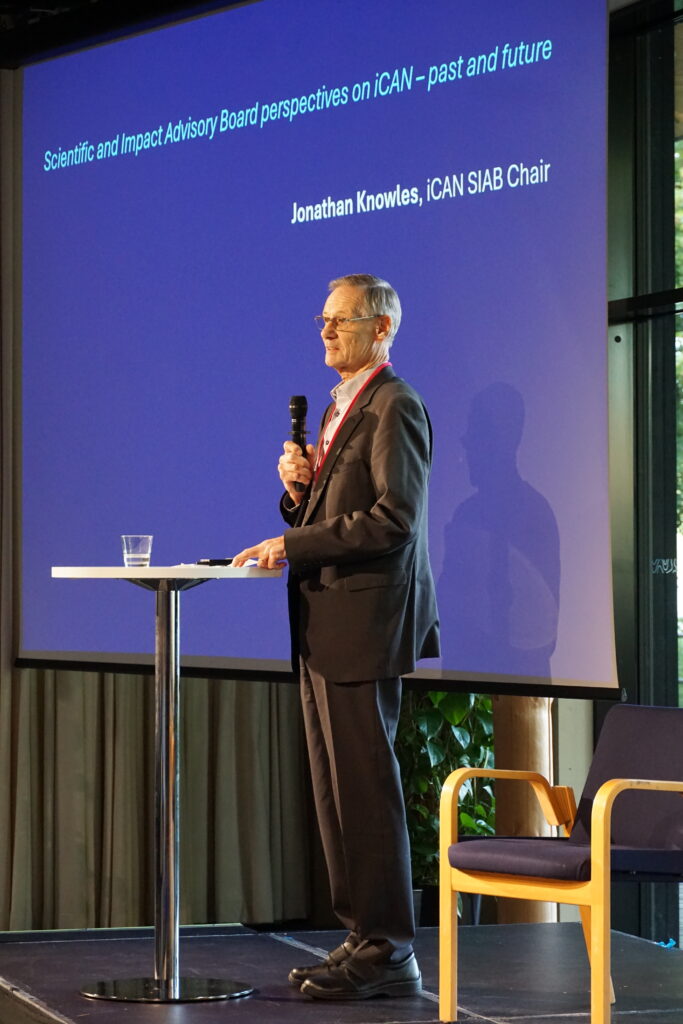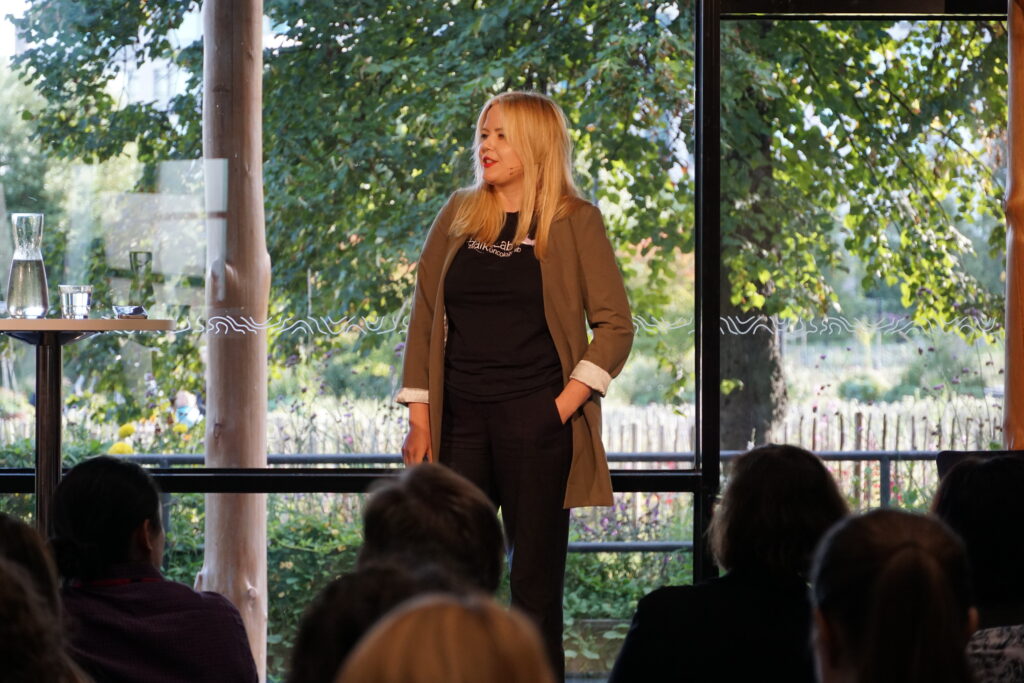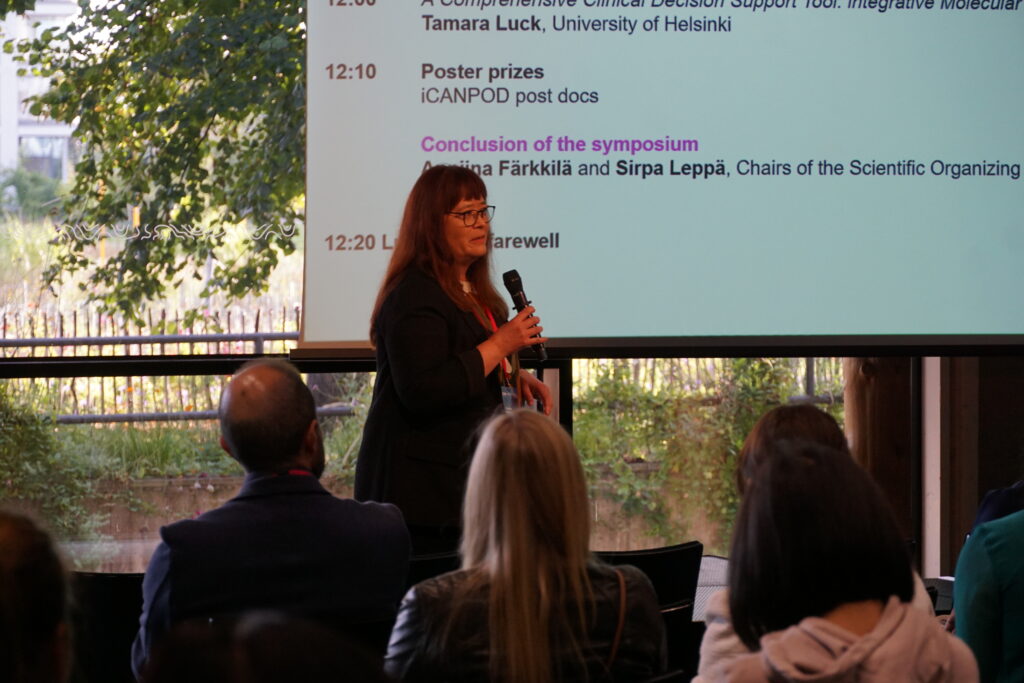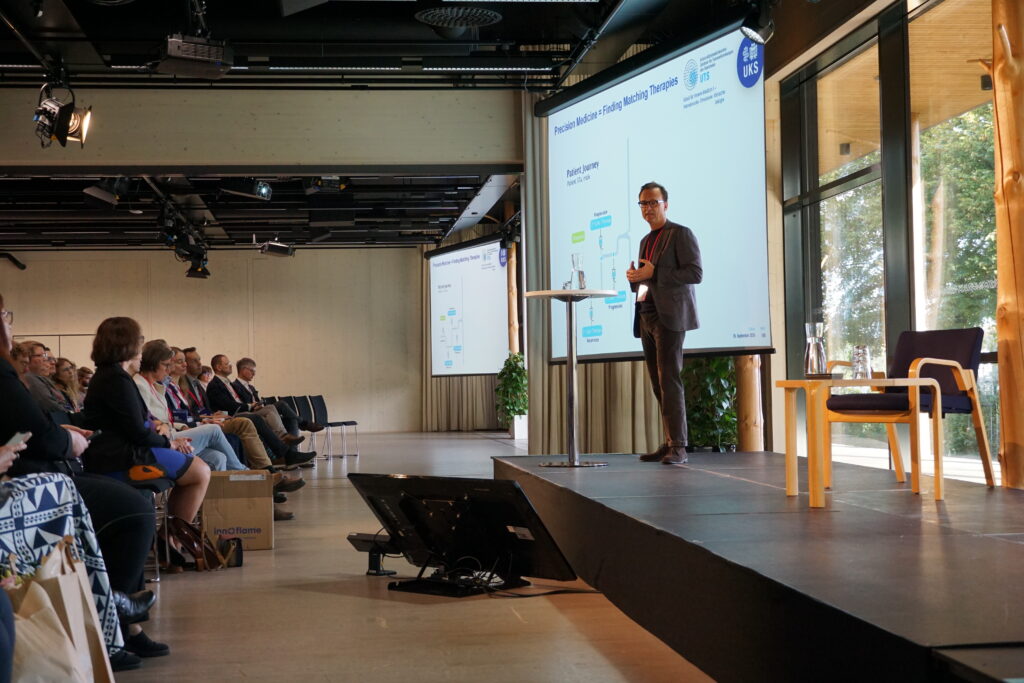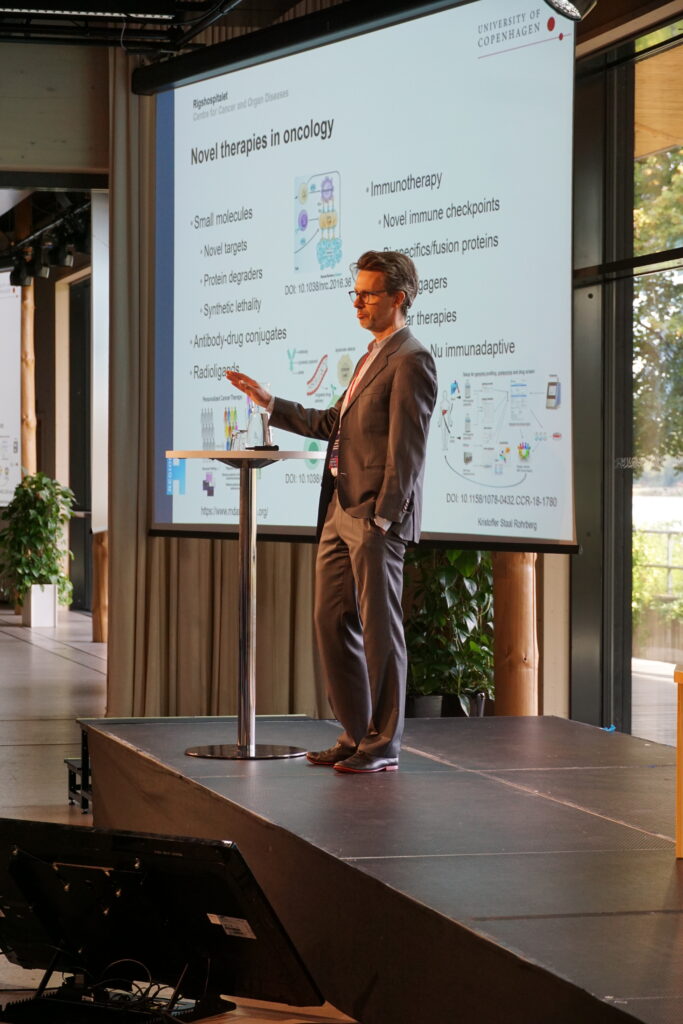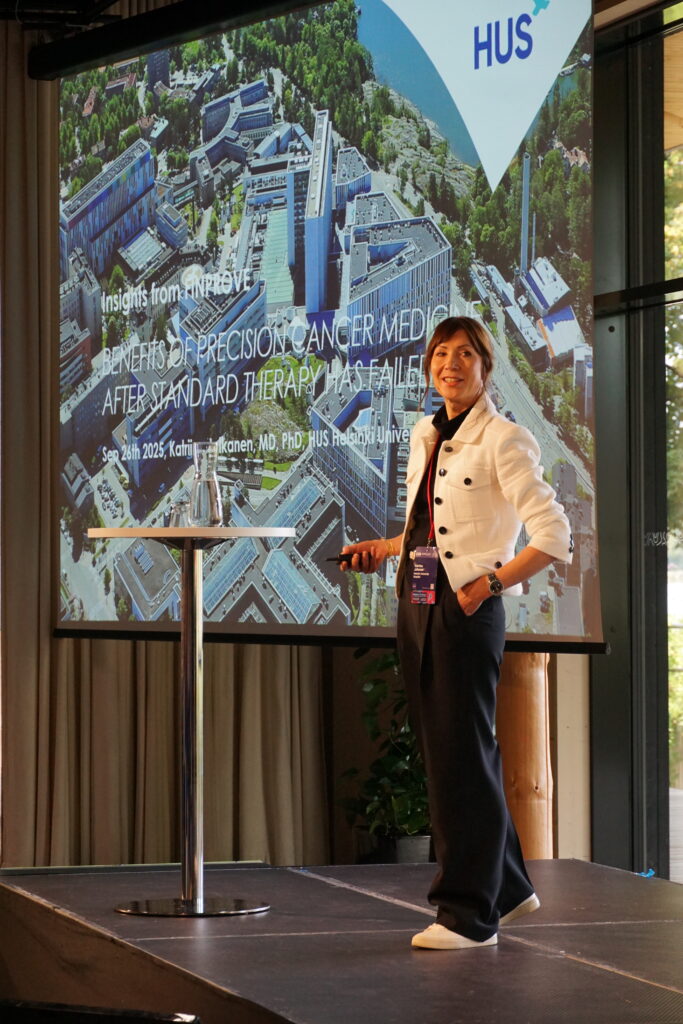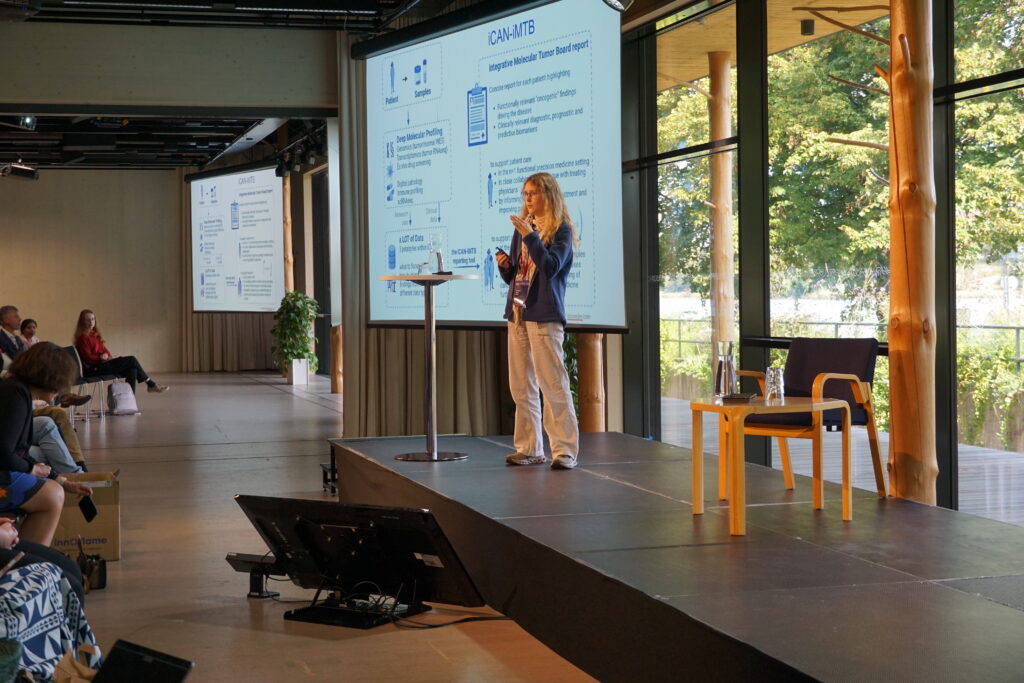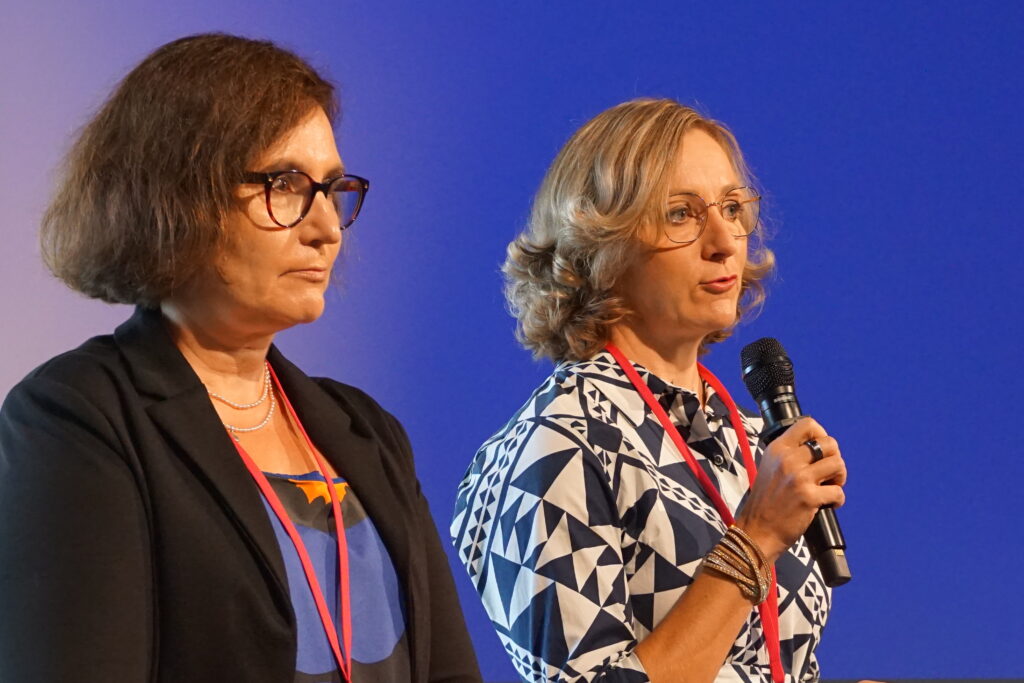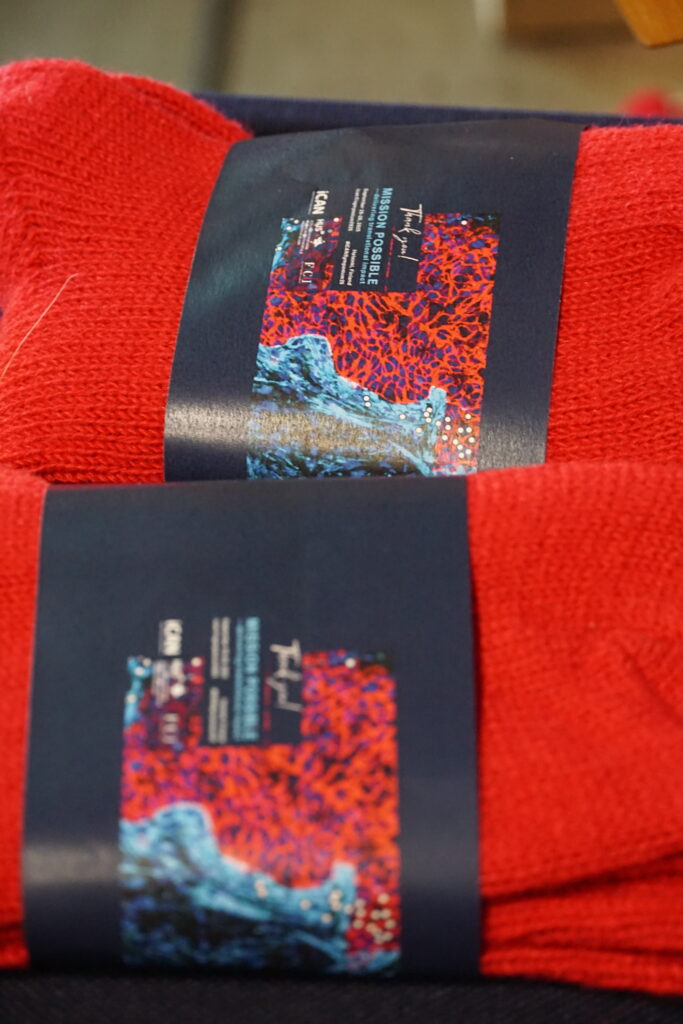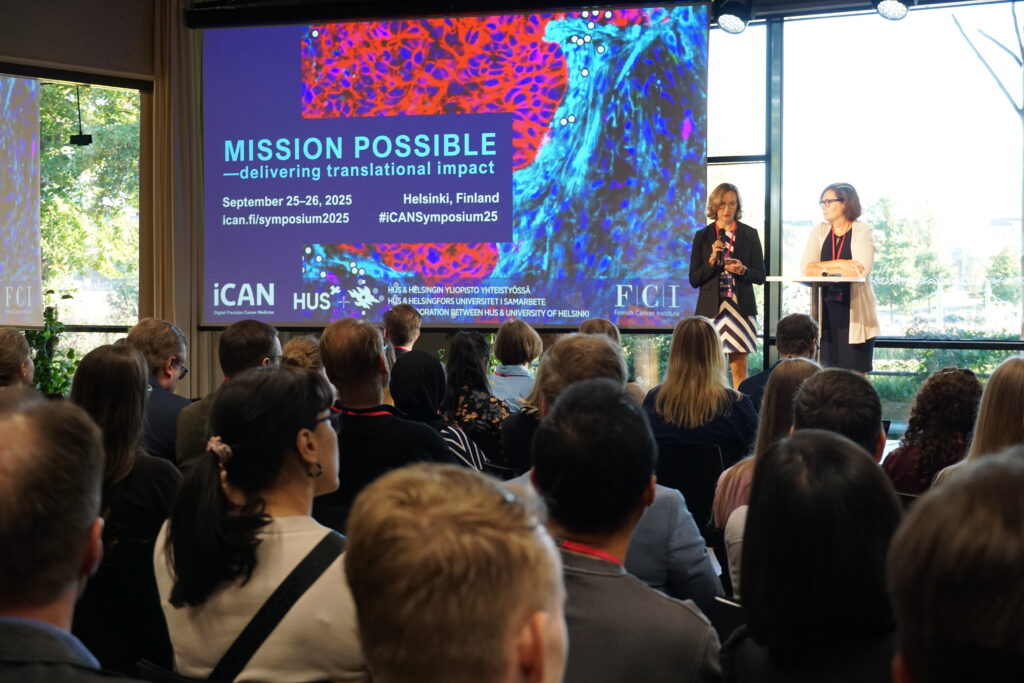Mission Possible – Delivering translational impact
More than 360 participants: speakers, researchers, clinicians, patients, sponsors, and other cancer research specialists gathered in Little Finlandia (Helsinki) on 25.–26.9.2025 for Mission Possible – Delivering Translational Impact, a two-day international symposium, dedicated to advancing cancer research and fostering collaboration. The symposium was organised by iCAN together with the Finnish Cancer Institute.
The symposium featured an inspiring programme of talks on biomarkers for precision oncology, clinical implications of liquid biopsies, translational research and precision cancer medicine, and a poster session with 60 posters.
Scientific insights from the symposium
Professor Peter Sorger from Harvard Medical School gave an excellent keynote on highly multiplexed spatial profiling for discovery and diagnosis. He presented their work using high-plex spatial imaging (CyCIF) to study tumour tissues. He also introduced a new technology that enables 3D imaging of thick tissue sections (40 µm), allowing researchers to capture more accurate cell neighbourhoods and membrane interactions. Using this approach, he illustrated how 3D imaging can be applied to investigate initiation, invasion, and immune editing in cutaneous melanoma. Their findings show that early-stage melanomas already display strong variability across cells and regions, shaped by nearby immune and vascular environments, which drive tumour cell state changes and may fuel the transition to invasive disease.
Mika Kontro from Helsinki University Hospital Comprehensive Cancer Center presented the VenEx trial, a prospective, multicentre phase II study that enrolled 104 AML patients across different disease stages. The study showed that ex vivo venetoclax testing is feasible, rapid, and reliable, with strong predictive value for treatment response and survival. These findings suggest that incorporating functional drug-sensitivity assays could help identify patients most likely to benefit from venetoclax-based therapy.
Leena Latonen from the Institute of Biomedicine, University of Eastern Finland, presented her group’s latest work on virtual staining using generative AI. With this technology, they can generate H&E-like images from unstained tissue sections, already achieving subcellular resolution.
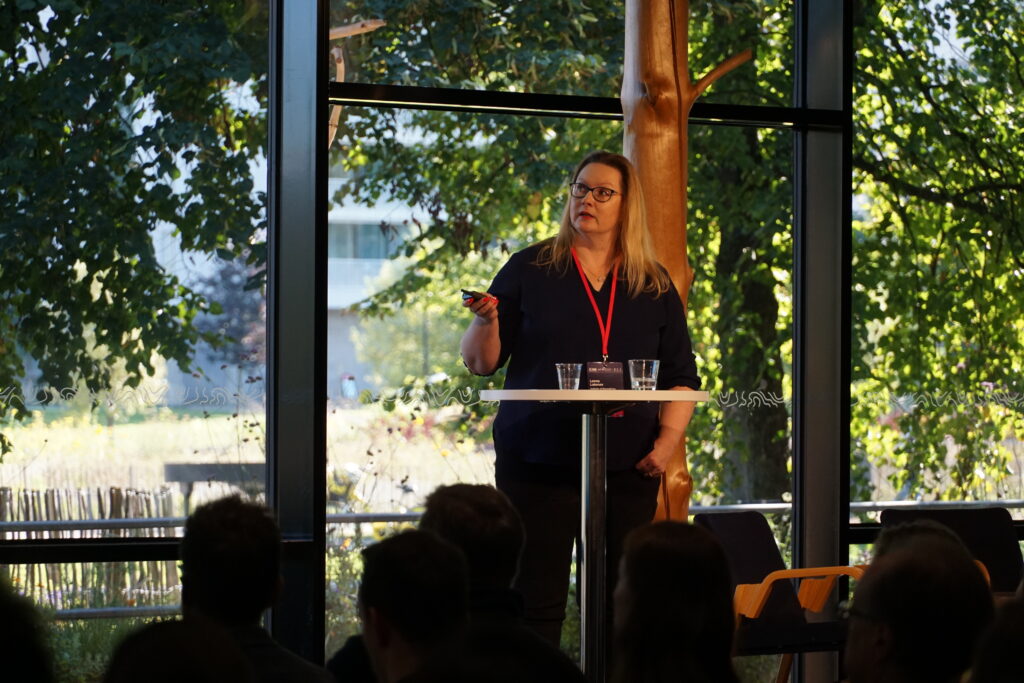
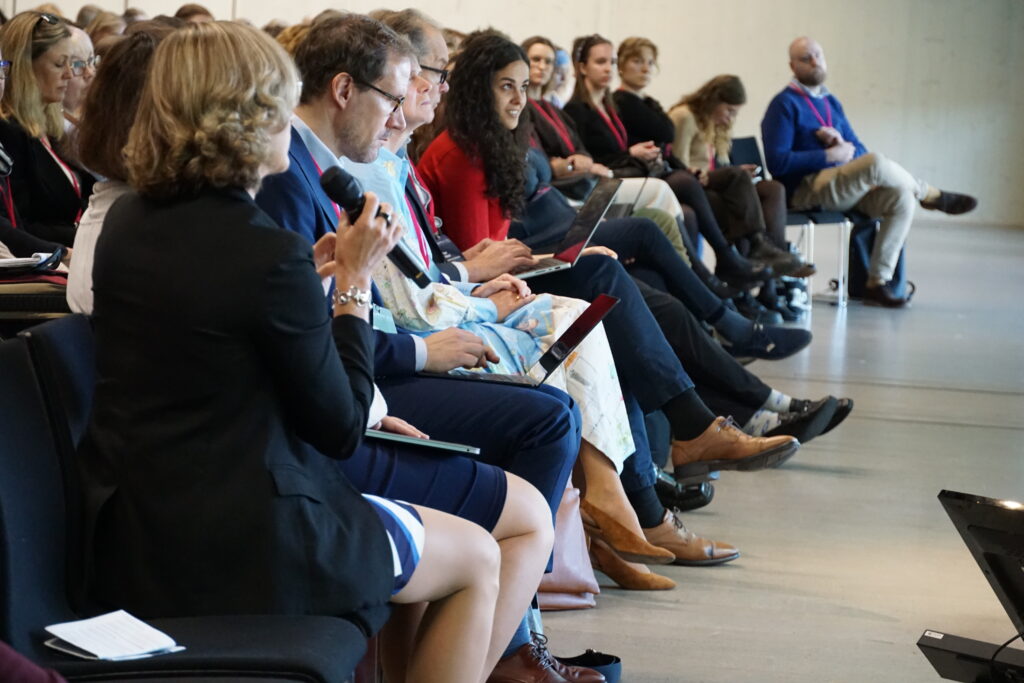
Lassi Paavolainen from the University of Helsinki presented his group’s work on using self-supervised machine learning to enable unbiased characterisation of cancer patients from multiplexed tissue microscopy images. They showed that in non-small cell lung cancer (NSCLC), the presence and spatial location of cancer-associated fibroblasts (CAFs)—whether in the tumour centre or adjacent areas—are associated with patient prognosis.
Stefan Alig from University Hospital Essen presented his group’s work on analysing ctDNA in plasma from B-cell lymphoma patients using CAPP-seq. CAPP-seq can identify somatic single-nucleotide variants and classify patients into different clusters accordingly.
Elisa Oricchio from ISREC – Swiss Institute for Experimental Cancer Research, EPFL, presented work on the dual anti-tumour and pro-tumour roles of the immune system. By co-culturing macrophages with cancer cells and performing a drug screen, her team identified PB1 (pihahommia-booster 1) as a compound that enhances macrophage cytotoxicity against cancer cells. Mechanistically, PB1 targets HSD17B12, altering lipid metabolism specific to cancer cells. In addition, she showcased ex vivo drug screening tools using fresh tumour biopsies, where drug sensitivities closely matched clinical outcomes in 8 of 9 cases, highlighting the potential for advancing personalised medicine.
Sakari Vanharanta from the University of Helsinki highlighted that carcinogenesis is a complex and chaotic evolutionary process; even after genomic mutations occur, cancer often takes years to develop. His group focuses on the transcriptional determinants of this process. They found that VHL mutations are highly specific to renal cell carcinoma (RCC) and, using genetically modified mouse models combined with scRNA-seq and scATAC-seq, identified a transition stage between non-cancerous and cancerous cells. Interestingly, this transitional state closely resembles transcriptional programmes induced by tissue injury.
A session on Thursday was dedicated to patient perspectives on data-sharing and data governance. The session started with Jan Geissler‘s talk that highlighted the importance of patient involvement in building trust. The panelists: Tuula Helander, Taru Salovaara, Kimmo Porkka, Mirjami Tran Minh, and Sirpa Leppä discussed the latest news of amending secondary use act, the role of the first Finnish Cancer Strategy, and more.
Poster session and the best poster prizes
Best poster prizes were handed to Elisa Närvä (Mass Cytometry Approach for Quantitative Analysis of Stemness in Cancer), Amos Bonsdorff (Short fragment fraction of mononucleosomal cfDNA dynamically detects high-risk patients with large B-cell lymphoma), and Emma Viitala (High-resolution integrative analysis allows characterization and spatial annotation of normal and cancer-associated colon fibroblasts) after a careful evaluation by iCANPOD post-doctoral programme members. Congratulations to the winners – each at a different career stage!
Concluding the symposium: Connections and appreciation
The symposium dinner at the Hesperia Ballroom (Crowne Plaza Helsinki) provided a perfect setting to connect with some of the most impactful figures shaping cancer research in Finland and beyond. In a relaxed atmosphere, clinicians, trialists, spatial biology and liquid biopsy pioneers, AI innovators, patient advocates, and industry partners exchanged ideas, forged new collaborations, and explored ways to accelerate translational impact — an inspiring finale to a day devoted to moving discoveries from bench to bedside.
Thank you to the Scientific Organising Committee, iCAN Core team, and our volunteers from iCANDOC and iCANPOD, our partner FCI, and the sponsors for making “Mission possible – delivering translational impact” a reality.
Last but not least, the symposium demonstrated the community’s shared commitment to accelerating research, with the ultimate goal of improving cancer prevention, diagnosis, and treatment. A heartfelt thank you to all the speakers and participants! We look forward to seeing you again next year in Tampere!
Moments from the symposium:
Text: Yafei Wang, Ehsan Zangene, and Marketta Liljeström
Photos: Marketta Liljeström and Ehsan Zangene

